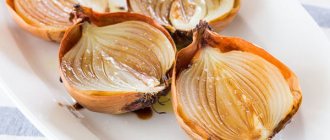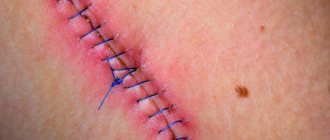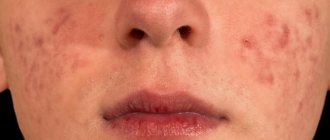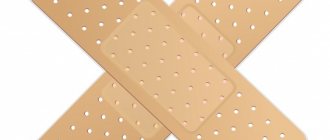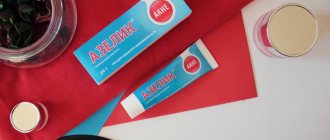Closed wounds are the most dangerous type of skin injury. With such injuries, an abscess often occurs: pus formed during the fight against infection accumulates under the skin and causes inflammation. To get rid of the formation, pharmaceutical ointments are used that draw out pus from a closed wound and traditional medicine that can replace them.
Use special ointments to draw out pus from a wound.
Which ointment draws out pus best?
December 20, 2022
5796
5
3
Content
- Why does pus appear in the wound?
- What kind of ointments are there that draw out pus?
- How to choose an ointment that draws out pus
- 10 most effective ointments for drawing pus from a wound
- Tetracycline ointment
- Tetraderm
- Dioxidine
- Ichthyol
- Levomekol
- Flucinar-N
- Streptocide
- Sintomycin
- Fluorocort
- Vishnevsky ointment
- Folk remedies for drawing pus from a wound
Any wound (cut, punctured, torn or chopped) can begin to fester. You are not insured against such a complication, even if the wound is minor. At the first signs of wound suppuration, you need to start using ointments that draw out the pus. If the problem gets worse, you will have to surgically “clean” the wound. Therefore, we will try to figure out why the wound may fester and which ointment is better to choose in order to prevent this or get rid of the pus.
Reviews
Svyatozar, Kalachinsk
An old well-known remedy. You apply it to an infected wound - by the morning it becomes larger, the abscess fills. At first it seems terrible, it has become very bad. Then the pus comes out and everything heals quickly. Ichthyol ointment strongly draws pus to the surface of the skin.
Yulia, p. Myshkin If the abscess is small, you can pull it out. And if the wound is large, the pulling of pus will be too strong. I had a small wound from a hangnail. It started to fester. She smeared it with ichthyol and cured it in a couple of days. But when there was a big cut on the entire finger, and it so happened that it became infected, she no longer dared to smear it with ichthyol. It will swell your whole arm. She smeared it with levomekol and dimexide and wrapped it with a bandage on top.
Gennady, Yekaterinburg I often use ichthyol ointment for acne - I apply it to each pimple in the evening, cover it with a bandage and plaster, and leave it on all night. In the morning, either the pimple has already opened, or I pierce it with a needle and burn it with alcohol.
Why does pus appear in the wound?
Bacteria get into any wound, no matter what size it is. But the wound does not always fester. Suppuration is aggravated by the following factors:
- significant tissue damage;
- non-viable tissue in the wound cavity;
- foreign bodies in the wound;
- blood in the wound;
- many pathogenic microorganisms in the wound.
You need to be very careful after receiving any wound. Even a small splinter under the skin can cause suppuration. Pathogenic microorganisms that cause suppuration: streptococci, staphylococci, E. coli and the like.
The risks of suppuration increase if the injured person has diabetes, vascular disease, somatic problems, excess weight, and also if he is an elderly patient.
The nature of the wound also matters for the development of suppuration. If it is a puncture wound, then it may fester due to the fact that the wound channel is too narrow (there is no normal outflow of the contents of the wound). If during a wound the surrounding tissues are crushed, suppuration may begin due to the large amount of dead tissue in the wound and its contamination.
By the way, wounds on the neck and head heal faster, and on the feet – the slowest.
Symptoms of wound suppuration
Read also: 10 most effective acne remedies 10 creams and gels to combat acne and acne.
How to choose an ointment that draws out pus
Pus in the wound appears due to infection. With purulent wounds, various complications can develop and cause serious discomfort to a person. Symptoms of a wound infection include redness, swelling, pain when touched (or not), increased body temperature near the wound, and discharge of pus. Typically, for such symptoms, local medications based on hormones or with antibacterial properties are prescribed. What to look for when choosing an ointment for drawing out pus?
- Pregnancy and breastfeeding.
Most hormonal and antibacterial ointments are contraindicated during pregnancy and lactation, since they negatively affect the fetus and pass into mother's milk. - Accompanying illnesses.
Often, ointments based on glucocorticoids (these are analogues of adrenal hormones) are used to treat purulent wounds. These are potent substances with a pronounced anti-inflammatory effect. Literally after the first use of such ointments, negative symptoms go away completely or are significantly reduced. But you need to remember that such drugs are prescribed exclusively by a doctor and cannot be used for a long time, since they have many side effects. - Tendency to allergies.
Sometimes an allergic reaction can be provoked not only by the active substance of the ointment for suppuration, but also by the auxiliary components. Therefore, allergy sufferers need to be extremely careful, although in people who are not prone to such problems, the body can react. - Patient's age.
Although children often need ointments containing antibiotics, pediatricians try to avoid such drugs as much as possible. In children, the risk of developing allergies and digestive problems due to antibacterial agents is much higher than in adults. Therefore, if a child is injured, it is better to start with gentle methods (for example, treating the wound with saline solution). If there is no effect, you need to consult a doctor who will select the right antibacterial drug. Hormonal ointments are rarely prescribed to children. - Stage of the wound process.
You need to understand whether an ointment that draws out pus is really needed. If this is the second stage of the wound process (wound healing), then there is no point in such means. By this time, the wound has already cleared up - and ointments like Levomekol will simply be useless, although they will not do any harm.
IMPORTANT!
If the inflammation is too severe and there are symptoms of intoxication of the body (general weakness, increased body temperature), and ointments do not help, you should urgently consult a doctor.
Reasons for the development of purulent
Symptoms
Any inflammation is accompanied by redness, swelling, pain and fever. In purulent-inflammatory diseases of any localization, pus always forms. Many people are interested in the question, what does it look like and what color? Color and consistency are variable and depend on the pathogen, location and possible impurities (for example, blood). Usually fresh purulent discharge is liquid and then thickens.
Thick, creamy, white-yellow or green pus forms when infected with staphylococci. Streptococcal pus is liquid, grayish-yellow and has an unpleasant odor. Pus caused by E. coli is foul-smelling, thin, and brown in color. What does purulent discharge consist of? The cellular composition of pus is different and depends on the type of microorganism. It contains globulins and albumins from blood serum, microbial enzymes, leukocytes, tissue breakdown products, glycogen, fat droplets and microorganisms. What does pus taste like? Usually, no one specifically tries it, but if an abscess has formed in the mouth and ruptured, then the person is forced to try the purulent discharge - it has a sweetish taste.
Boils on the face
Most often on the face there is acne (blackheads), boils or abscess . With a boil, soreness and redness of the skin around the hair follicle appears. Tissue infiltration and pustule gradually increase and are accompanied by severe pain. After a few days, pus forms in the center of the boil. After opening, a purulent core is visible, separated along with pus. An ulcer forms at the site of the detached necrotic core. As the boil opens and the rod separates, the pain decreases, the inflammation subsides and the seal resolves. Gradually, the ulcer fills with granulations and scars.
Photo of boil and carbuncle
Carbuncle , which is an inflammation of several hair follicles at once (a cluster of fused boils), has larger compaction and redness and is more painful. The infiltrate has a spherical shape, and the center is bluish in color. The stage of “ripening” of the carbuncle lasts 10-12 days. The patient's condition worsens - there may be a high temperature, headache, nausea, weakness. The resulting purulent-necrotic masses acquire a dark color. When the skin breaks, green pus and necrotic masses are released from many places. Due to the combination of several rods, a large defect is formed in the skin and a deep ulcer is often formed. After tissue and pus are rejected, the condition improves. A deep defect takes a long time to heal and deep scars can form on the skin.
A purulent abscess is a more serious disease. At first, an abscess on the face is a dense, painful, well-defined formation. If the abscess is located superficially, the skin over it is red and hot. Abscess formation lasts 7-8 days. In the center, due to the formation of pus and softening of tissues, oscillation (fluctuation) is determined. In deep lesions, fluctuation is difficult to determine. The general condition of the patients is disturbed.
Many of us have had stye (medical term hordeolum ) - a purulent formation on the eyelid associated with inflammation of the hair follicle of the eyelash (the sebaceous gland is also involved in the process). External styes are more common. It begins with soreness, redness and swelling of the eyelids. After 2-3 days, an external stye forms at the edge of the eyelid with a yellow center of pus. The patient is bothered by lacrimation and foreign body sensation. After a few days, the abscess opens, pain and swelling gradually decrease. It must be remembered that any purulent formation on the face and head is dangerous because it is possible to develop thrombosis of the sinuses of the brain and purulent foci in the brain itself.
Ulcers on the legs
Superficial small purulent formations appear after minor injuries and cuts, and they do not affect the general condition of a person. A more serious abscess on the leg, causing discomfort, pain and accompanied by fever, is associated with a boil or carbuncle .
There may also be multiple boils (furunculosis), the treatment of which is difficult because they constantly recur. Pus under the nail is formed by subungual felon . This disease is associated with a splinter getting under the nail or with the spread of skin whitlow. After the injury, a few days later a tugging pain appears under the nail. After a few more days, pus accumulates under the nail, the pain intensifies, and the temperature rises. If pus accumulates, the doctor peels off and cuts out the nail plate either in a small area or completely.
Breast abscess
With a breast abscess, a cavity filled with pus forms in the tissues. In 90% of cases, an abscess develops in the postpartum period. Its occurrence is associated with the penetration of bacteria (streptococcus, Escherichia coli, Proteus or staphylococcus) into the mammary gland. They enter the body through cracks in the nipple that form during breastfeeding. One of the factors in the development of an abscess is stagnation of milk if a woman neglects to pump or completely refuses breastfeeding.
What does an abscess look like? Suppuration of the mammary gland is located superficially (subcutaneous abscess) or deep in the tissues (intramammary and retromammary abscesses).
Photo of subareolar abscess
The woman experiences throbbing pain that intensifies with movement (walking, running, bending). Feeding the baby becomes impossible due to severe pain.
- When examining and palpating the chest, the epicenter of pain is determined.
- Due to edema, the mammary gland increases in volume.
- over the abscess is red and hot.
- Purulent discharge often appears from the chest.
- The axillary lymph nodes on the affected side are enlarged and painful.
Abscess under the arm
It may be caused by a boil or hidradenitis. With hidradenitis, conglomerates with purulent contents form, protruding above healthy tissues (“bitch udder” is how this disease is called in everyday language). When the conglomerate is opened, several fistulous tracts are formed, but necrotic rods, as with a boil, are not formed.
An abscess on the labia may be associated with a boil of the labia majora and bartholinitis . With a boil, a painful lump initially forms that tends to enlarge. After a few days, a purulent core forms. The boil can open on its own, but sometimes prompt assistance is required.
Inflammation of the gland of the vaginal vestibule is called bartholinitis . Bartholin's glands are located at the junction of the labia majora and labia minora. Inflammation causes severe discomfort and pain. The disease begins with the appearance of a lump (painful “bump”) with redness of the mucous membrane above it. When infection penetrates into the gland, its purulent melting occurs and purulent bartholinitis , which is classified as an abscess, since the cavity of the gland is filled with pus.
Tetracycline ointment
This antibacterial ointment has long been popular because it works well against bacterial infections of the eyes and eyelids. Tetracycline ointment relieves inflammation, reduces redness and pain (excellent, for example, for treating stye). The product does not cause a burning sensation, the tube has a convenient tip, the ointment can also be used for irritation of the mucous membrane of the intimate area. Tetracycline ointment is inexpensive, suitable for animals, the only drawback is that it is sometimes difficult to apply behind the eyelid.
Tetracycline ointment
JSC "Tatkhimfarmpreparaty", Russia
Tetracycline ointment is used for skin diseases: acne, streptostaphyloderma (a pustular skin disease caused simultaneously by strepto- and staphylococci), furunculosis (multiple purulent inflammation of the skin), folliculitis (inflammation of the hair follicles), infected eczema (neuroallergic inflammation of the skin with associated microbial infection) , trophic ulcers (slow-healing skin defects), etc.
from 36
171
- Like
- Write a review
Pathogenesis
In the pathogenesis of purulent inflammation, a decrease in antibacterial resistance, both general and local, is important. The integrity of the skin and the bactericidal properties of the secretion of the sweat and sebaceous glands prevent the introduction of pyogenic flora. If these conditions are violated, purulent-infectious inflammation develops. It consists of successive phases. histamine , prostaglandin , serotonin , etc.) in response In the exudative phase, under the influence of histamine, the liquid part of the plasma and proteins enter the intercellular spaces. During the infiltrative phase, tissues are saturated with lymphocytes and macrophages. As a result of exudation and infiltration, interstitial pressure increases, which significantly disrupts the condition of tissues, metabolic processes in them and reduces resistance to the effects of microorganisms. Then follows the immunological phase - the cellular and humoral response.
Inflammatory infiltrates have different outcomes, depending on the cellular composition of the infiltrate. Sometimes infiltrates resolve, but in most cases, with leukocyte infiltrates, lysosomal enzymes are released, which melt the tissue with the formation of pus - a purulent focus appears. Over time, areas of softening appear in the purulent focus and the abscess opens on its own or is opened surgically. The process ends with the reparative phase - the formation and growth of granulation tissue, which fills the resulting tissue defect as a result of purulent melting. With shallow lesions, no trace remains on the skin, but with deep lesions, a scar is formed.
Tetraderm
This is a complex drug containing many active substances: antibacterial, antifungal components, an analogue of the adrenal cortex (and in a form that is not absorbed into the blood), dexpanthenol. "Tetraderm" accelerates wound healing, draws out pus, relieves inflammation, reduces itching, allergic manifestations, and destroys harmful bacteria. The ointment also helps treat nail fungus and bumps in the corners of the mouth. Among the disadvantages of the product are the high price and the fact that the drug is not used on open wounds.
Tetraderm
Vertex CJSC, Russia
Treatment of dermatoses of inflammatory origin with concomitant bacterial and mycotic infection or a high probability of secondary infection (simple and allergic dermatitis, atopic dermatitis (including diffuse neurodermatitis), limited neurodermatitis, eczema, dermatomycosis (dermatophytosis, candidiasis, pityriasis versicolor), especially when localized in the groin area and large folds of skin; simple chronic lichen (limited neurodermatitis).
from 483
5.0 2 reviews
45
- Like
- Write a review
Dioxidine
This drug is a serious antibiotic that is prescribed for severe infections. You can buy Dioxidin both in the form of an ointment for external use and in the form of injections (for the treatment of infections of internal organs, for sepsis). Due to its too active action, Dioxidin is contraindicated for pregnant women, breastfeeding women and under 18 years of age. The drug can only be used under medical supervision. The product can be used for severe allergies while taking an antihistamine. This ointment for drawing out pus has few side effects, but contraindications include adrenal insufficiency.
Dioxidine
OJSC "Nizhpharm", Russia; PJSC "Biosintez", Russia; Novosibkhimpharm OJSC, Russia
Broad-spectrum antibacterial bactericidal drug.
Purulent bacterial infections caused by sensitive microflora when other chemotherapeutic agents are ineffective or poorly tolerated. External use - superficial and deep wounds of various locations; - long-term non-healing wounds and trophic ulcers; - phlegmon of soft tissues; - infected burns; - purulent wounds with osteomyelitis. Intracavitary administration - purulent processes in the chest and abdominal cavity; - for purulent pleurisy, pleural empyema, lung abscesses, peritonitis, cystitis, wounds with deep purulent cavities (soft tissue abscesses, pelvic cellulitis, postoperative wounds of the urinary and biliary tract, purulent mastitis). Treatment of burn and purulent-necrotic wounds promotes faster cleansing of the wound surface, stimulates reparative regeneration and marginal epithelization, and has a beneficial effect on the course of the wound process. from 35
5.0 1 review
747
- Like
- Write a review
Ichthyol
Budget ointment for suppuration of wounds, which was used by our grandmothers. “Ichthyol” has long proven its effectiveness in suppressing pathogenic flora. In addition, the ointment has an irritating effect, stimulating improved blood flow. Therefore, “Ichthyol” is indicated not only for the treatment of purulent wounds, but also for the treatment of diseases of the pelvic organs (in women and men). The drug reduces congestion by stimulating blood circulation in the internal organs. You can buy “Ichthyol” at any pharmacy, it perfectly treats inflammatory skin diseases that cause itching, a jar lasts a long time, the product draws pus from closed wounds, helps with ingrown toenails, and has a thick consistency. The ointment has a pungent odor, and it also needs to be carefully applied to the mucous membranes.
Ichthyol
JSC "Monfarm", Ukraine; Yaroslavl Pharmaceutical Factory, Russia
Ichthyol is an anti-inflammatory agent, has a local anesthetic, antiseptic, and keratoplasty effect.
from 24
1036
- Like
- Write a review
Levomekol
Perhaps one of the most famous ointments for drawing pus from a wound. Levomekol is considered the most effective drug among non-hormonal drugs. In addition to the fact that the ointment gets rid of pus, it fights the causes of its appearance - harmful bacteria. The composition contains a regenerating substance that helps the wound heal faster. "Levomekol" can be used not only on wounds, but also for burns, hemorrhoids, to treat acne and gum disease. This drug is ideal for purulent wounds, it gives a good effect when applied under a bandage, can be used in children from 1 year old, and contains almost no auxiliary components. Among the disadvantages is the possibility of allergic reactions.
Levomekol
OJSC "Nizhpharm", Russia
An ointment that has an antimicrobial, anti-inflammatory, drying effect and is used for: Purulent wounds (including those infected with mixed microflora) in the first (purulent-necrotic) phase of the wound process.
from 38
1147
- Like
- Write a review
Flucinar-N
This potent ointment for purulent wounds contains an antimicrobial component and an analogue of the adrenal cortex. "Flucinar-N" not only destroys pyogenic microorganisms, but also relieves inflammation, swelling, and pain. The drug is perfect for treating secondary infections, when the wound becomes infected from the outside or from a source inside the body. "Flucinar-N" can be used to treat varicose veins, it is indicated for children over 2 years old, it helps with atopic dermatitis and psoriasis. The ointment has few contraindications, but it can be addictive.
Flucinar N
Pharmaceutical plant Elfa A.O., Poland
Allergic dermatoses complicated by bacterial infection caused by neomycin-sensitive flora: allergic (including contact, occupational, solar) dermatitis;
eczema (including contact, constitutional, coin-shaped, seborrheic); hives; psoriasis (including scalp); erythema multiforme; erythroderma; atopic dermatitis; pruritus; dermatoses that cannot be treated with other corticosteroids (including lichen planus, lupus erythematosus /skin manifestations/); secondary infections from insect bites. Bacterial skin infections caused by neomycin-sensitive flora, complicated by the development of allergic reactions: impetigo; infected diaper rash. First degree burns. from 199
165
- Like
- Write a review
Contraindications
Like many drugs, Levomekol has contraindications:
- individual intolerance to the components of the medication;
- hypersensitivity of the body;
- fungal infections of the epidermis;
- tendency to allergic reactions;
- psoriasis.
The official instructions for use indicate that in pediatrics the ointment is prescribed starting from 3 years of age. However, many pediatricians, based on the harmlessness of Levomekol, allow its use from infancy.
Streptocide
You can buy “Streptocide” not only in the form of an ointment, but also in powder. The drug has a drying effect. And although it contains the antibiotic sulfanilamide, the ointment is not considered an antibacterial agent. This is because the active substance here, unlike antibiotics, does not destroy pathogenic microorganisms, but stops their reproduction. This is called the "bacteriostatic effect". “Streptocide” is a safer drug than antibiotics (after all, when bacteria die, the body becomes intoxicated). And although the manufacturer allows the use of the drug from birth, there are known cases of jaundice during treatment with Streptocide. This ointment for purulent wounds is odorless, reduces pain, is suitable for healing tattoos, and should be stored in the refrigerator.
Streptocide
Lyumi, Russia
Infectious and inflammatory diseases caused by microorganisms sensitive to sulfanilamide, incl.
tonsillitis, erysipelas, cystitis, pyelitis, enterocolitis, infectious diseases of the skin and mucous membranes. from 9
530
- Like
- Write a review
Classification
According to localization, purulent infection can be:
- Skin and subcutaneous tissue of the arms, torso, legs.
- Skull skin.
- Pleura and lungs.
- Mediastinum.
- Abdominal organs.
- Pelvic organs.
- Bones and joints.
The most common purulent infection of the skin and its appendages (hair follicles, sebaceous glands, nails), as well as subcutaneous tissue (the lesion is located under the skin). The localization of purulent foci can vary - on the head in the hair, on the ear or on the lip.
Pustular skin diseases are the most common dermatoses. Purulent sores on the body ( pyodermitis ) are caused by staphylococci and streptococci. The greatest contamination with staphylococci is in the folds of the skin and subungual spaces.
There are:
- Superficial forms of purulent skin diseases ( ostiofolliculitis , folliculitis ).
- Deep ( furuncle , carbuncle , hidradenitis ).
Staphylococcal lesions are always associated with the sebaceous gland or sweat gland, hair follicle. The lesion spreads deeper, local and general temperature rises and creamy yellow-green pus forms. Streptococcal lesions are superficial purulent lesions of smooth skin that enlarge through peripheral growth.
Ostiofolliculitis is the mildest form of staphyloderma affecting the tissue near the hair shaft. It occurs in men in the mustache and beard area and is single or multiple in nature. The process begins with the appearance of a small red papule, in its place a yellow abscess forms. After 3 days it becomes covered with a dirty yellow crust, which falls off with the formation of a residual pink spot.
Folliculitis is an inflammation of the hair follicle with the formation of pus. Unlike ostiofolliculitis, the sores in this case are surrounded by a red, inflamed cushion and are painful. Over time, a pustule forms, which opens and pus is released, forming erosion and a crust. The infiltrate resolves or a scar forms.
A furuncle is an inflammation of the hair follicle, sebaceous gland and subcutaneous tissue. The cause of the disease is a staphylococcal infection. Most often, boils form in areas that sweat, chafe, or are covered in vellus hair (legs, neck, face, and underarms). A boil often develops from folliculitis.
Furunculosis is a recurrent form of boil. There are local furunculosis (rashes in a limited area) and disseminated (elements scattered throughout the body). Chronic recurrent furunculosis has a sluggish course, periodically worsens and is difficult to treat with antibiotics.
Carbuncle is a purulent-necrotic inflammation of many hair follicles. The infiltrate is large due to the involvement of new follicles and the spread of inflammation deeper. The formation is sharply painful, and deep necrosis develops around the hair follicles in the central part.
Hidradenitis is an inflammation of the sweat glands that occurs with the formation of pus. The disease occurs at a young age, when the apocrine glands begin to function. Most often, the lesion forms in the armpit, sometimes on the nipple, around the genitals, navel or anus.
The most severe forms of purulent foci are:
- An abscess is an accumulation of pus in tissues and organs, delimited by a pyogenic capsule (membrane). Abscesses can form due to deep infection, hematogenous introduction of microbes, as well as as a result of medical manipulations. Many people are familiar with post-injection abscess. Often, an abscess of the buttock occurs after the administration of analgin , baralgin , magnesia , oil solutions and hormonal drugs. In the development of a purulent focus, the stage of infiltration and suppuration (or abscess formation) is distinguished. In the first stage, the skin turns red, swells, and deep in the tissues a dense, painful formation is detected. With suppuration (abscessation), the skin becomes bluish and areas of softening (fluctuation) appear. The abscess code according to ICD 10 is L02.3. An abdominal abscess can develop in any part of the abdominal cavity. Most often it appears after injuries, surgical operations, peritonitis and perforation of a hollow organ and intestinal tumor. Abscesses develop when infection spreads due to appendicitis , pancreatitis , Crohn's disease , diverticulitis . Patients have a high fever and severe abdominal pain. Computed tomography is used for diagnosis. Treatment is surgical with antibiotics.
- Cellulitis is a diffuse inflammation of the tissue without demarcation (there is no pyogenic membrane), and pus spreads throughout the tissue space.
- Empyema is an accumulation of pus in hollow organs.
- Mediastinitis is an inflammation of the mediastinal tissue, often purulent in nature. This disease is life-threatening. Mediastinitis often develops after surgery on the heart, lungs, aorta, vena cava, esophagus, thoracic lymphatic duct, nerves (vagus and phrenic) and mediastinal lymph nodes. Prevention of surgical infection is preoperative and postoperative antibiotic therapy. All patients are prescribed beta-lactam antibiotics ( penicillins , cephalosporins ) or vancomycin . In addition to surgical trauma, the development of mediastinitis is caused by an infection that spreads from adjacent organs through the cellular spaces: the esophagus, lungs, descending infection of the neck, oropharyngeal and dental infections.
Sintomycin
You can buy Sintomycin at any pharmacy; this drug has long won the trust of patients. "Syntomycin" is an antibiotic whose active ingredient is chloramphenicol. From Levomekol, which contains the same active ingredient, Sintomycin differs in that it only kills pathogenic microflora, but does not heal wounds. The ointment can be used in children from 2 months; it is prescribed for abscesses on the face and acne, and for panaritium (inflammation of the soft tissues of the fingers). The downside of the drug is that after opening the tube it is stored for only 6 months.
Sintomycin
OJSC "Nizhpharm", Russia; AltaiVitamins, Russia
Indications for the use of the drug Sintomycin are: purulent lesions of the skin and mucous membranes, trachoma, sycosis;
boils, carbuncles; long-term non-healing trophic ulcers, burns of II and III degrees. from 8
5.0 1 review
937
- Like
- Write a review
Side effects
Levomekol is considered a universal drug and is usually well tolerated by patients. But in case of overdose (if the drug is used for more than a week), allergic skin reactions may occur.
- hyperemia;
- burning;
- itching;
- urticaria;
- dermatitis at the site of application;
- local swelling;
- When using vaginal tampons, candidiasis may occur.
No incompatibility with other medicinal products has been reported. Make sure that the ointment does not get into your eyes, mucous membranes or inside. In case of contact with eyes and mucous membranes, rinse them immediately with running water. If swallowed, the stomach must be rinsed.
Fluorocort
This is a hormonal drug for the treatment of purulent wounds, and on small lesions the positive effect is noticeable almost after the first use. Contains the hormone triamcinolone. It is important to use Fluorocort only as directed and under the supervision of a doctor, since long-term use of the drug causes many side effects. The ointment helps well with jewelry rejection and for healing ear piercings. Fluorocort effectively relieves pain, is indicated for children over 1 year of age, and can be used in the second and third trimester of pregnancy after consultation with a doctor. The downside of the ointment is that it is too greasy, so it can leave marks on clothes.
Fluorocort
Gedeon Richter, Hungary
The drug has a pronounced anti-inflammatory, antiallergic, membrane-stabilizing and antipruritic effect and is used for the local treatment of dermatoses of non-infectious etiology.
from 184
5.0 1 review
578
- Like
- Write a review
Vishnevsky ointment
Probably the first ointment that comes to mind when we hear about “pulling out pus.” And although experts have mixed opinions about this remedy, patients praise Vishnevsky’s ointment. The product contains castor oil and birch tar. These two natural components are not antibiotics, but only have an antiseptic effect, that is, the effect of Vishnevsky ointment is weaker than that of antibiotics, but it is safer and not as aggressive. The drug is suitable for pregnant women, for children from 1 year old, it can be used on mucous membranes. Among the disadvantages is an unpleasant smell.
Balsamic liniment according to Vishnevsky
Tula Pharmaceutical Factory, Russia
- skin abscess;
- boil; - lymphadenitis; — lymphangitis; - burns; - frostbite; - wounds; - ulcers; - bedsores. from 29
187
- Like
- Write a review
Aloe juice treats minor purulent inflammations
Read also: Top 5 universal remedies for burns The most effective remedies for burns: thermal and solar.
Analogs
Analogs of Levomekol ointment have a bactericidal and healing effect. But the difference lies in the active ingredient of the drug. So, among the analogues one can name Fugentin, Levosin (additionally has an analgesic effect), Protegentin, Fastin-1, Salicylic-zinc paste.
Synonyms, that is, drugs with the same substance (but in higher concentration) as Levomekol ointment, can be considered Netran and Levomethyl. Substitute medications can only be prescribed by the attending physician.
Folk remedies for drawing pus from a wound
In addition to pharmaceutical preparations for purulent wounds, you can use folk remedies. But we want to warn you right away that such methods are not suitable for serious wounds. They are more effective for small boils and purulent pimples.
- Alcohol tincture of calendula.
This tincture relieves inflammation, dries the skin, and works as an antiseptic. In order for pus to come out of the pimple (even if it is deep), a cotton pad needs to be moistened with calendula and applied to the pimple (boil) overnight. In the morning you will see pus on the cotton pad. - Aloe.
Aloe leaves (pulp) perfectly draw out pus, relieve inflammation and help the wound heal faster. Cut an aloe leaf in half and apply the pulp to the inflamed area. Cover with a band-aid and let it work for several hours (preferably all night). - Potato.
Starch, which is found in abundance in potatoes, copes well with purulent inflammation. Grate a small potato on a fine grater and apply to the area of inflammation. On top - a cotton pad or bandage. Leave this bandage on for several hours or overnight. - St. John's wort infusion.
For 1 glass of boiling water – 1 tbsp. l. dry St. John's wort. Steam the infusion for 15 minutes. Then you need to strain it and make lotions. St. John's wort relieves itching, irritation, reduces inflammation, and kills bacteria. To draw out pus from a pimple or boil, moisten a cotton pad with St. John's wort infusion, apply to the site of inflammation and leave overnight.
Tests and diagnostics
- Establishing the correct diagnosis is not particularly difficult. It is enough to collect anamnesis and examine the patient.
- Prescribing a clinical blood test.
- To diagnose developing abscesses, modern methods of ultrasound and computed tomography are used. Sometimes invasive diagnostic methods are required - puncture of the infiltrate site.
- In case of furunculosis , prolonged healing of abscesses, culture of purulent contents is performed.
- Microbiological testing allows you to determine the type of pathogen and test it for sensitivity to antibiotics.
